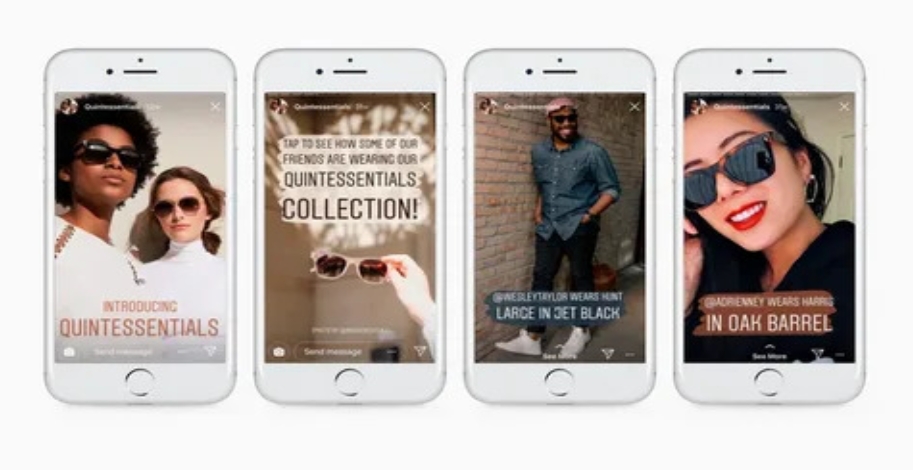Influencer Marketing and Story Viewing by Instanavigation

In the realm of digital marketing, influencer marketing has emerged as a powerful tool for brands to connect with their target audiences authentically. With the rise of social media platforms, particularly Instagram, Snapchat, and Facebook, influencers have become pivotal in shaping consumer preferences and driving purchasing decisions. Among the various techniques within influencer marketing, Instanavigation has gained significant traction as a compelling strategy to engage and captivate audiences. In this article, we delve into the symbiotic relationship between influencer marketing and story viewing, exploring its nuances, benefits, challenges, and prospects with the help of Instagram.
Introduction to Influencer Marketing
Influencer marketing revolves around collaborating with individuals who have a substantial following and influence on social media platforms. These influencers, often regarded as opinion leaders within specific niches, possess the ability to sway consumer behaviors through their authentic content and recommendations. By partnering with influencers, brands can leverage their credibility and reach to amplify brand awareness, foster trust, and drive conversions.
Understanding Story Viewing
Story viewing refers to the ephemeral content shared by users on social media platforms, such as Instagram and Snapchat, which disappears after 24 hours. This feature allows users, including influencers and brands, to share real-time updates, behind-the-scenes glimpses, product demonstrations, and interactive polls with their followers. With the increasing popularity of stories, brands have recognized the potential of leveraging this format to engage with audiences in a more spontaneous and immersive manner.
The Power of Story Viewing in Influencer Marketing
Engagement Boost
Stories offer a dynamic and interactive way for influencers to connect with their audience on a personal level. Unlike traditional posts, stories enable influencers to share unfiltered moments, fostering a sense of authenticity and relatability. The ephemeral nature of stories compels users to engage with content promptly, driving higher levels of interaction through features like polls, quizzes, and swipe-up links.
Brand Exposure
Story viewing provides brands with an opportunity to gain exposure to a wider audience through influencer collaborations. By appearing on an influencer’s story, brands can tap into their existing follower base, reaching potential customers who might not have been exposed to their products or services otherwise. Additionally, stories allow for the seamless integration of branded content within the influencer’s narrative, enhancing brand visibility without disrupting the user experience.
Choosing the Right Influencers for Story Viewing
When selecting influencers for story-viewing campaigns, brands should prioritize relevance, authenticity, and audience demographics. Partnering with influencers whose values align with the brand’s ethos ensures organic integration of branded content, resonating authentically with their followers. Moreover, assessing the influencer’s engagement rate, audience demographics, and previous collaborations can help gauge their effectiveness in driving results for the brand.
Effective Strategies for Utilizing Story Viewing
Authenticity and Transparency
In a landscape inundated with sponsored content, authenticity is paramount to maintaining credibility with the audience. Brands should encourage influencers to maintain transparency about sponsored partnerships and ensure that the content aligns with the influencer’s brand voice. By fostering genuine connections with their audience, influencers can cultivate trust and loyalty, leading to more meaningful interactions and conversions.
Storytelling
Story viewing presents an opportunity for brands to craft compelling narratives that resonate with their target audience emotionally. By leveraging storytelling techniques, such as narrative arcs, character development, and visual storytelling, brands can evoke powerful emotions and create memorable experiences for viewers. Effective storytelling humanizes the brand, fostering a deeper connection with consumers and leaving a lasting impression.
Call to Action
To maximize the impact of story-viewing campaigns, brands should include clear and compelling calls to action (CTAs) that prompt viewers to take desired actions, such as visiting the brand’s website, making a purchase, or participating in a contest. By incorporating swipe-up links, interactive stickers, and engaging prompts, brands can drive traffic, conversions, and engagement, thereby maximizing the ROI of their influencer partnerships.
Measuring the Success of Story Viewing in Influencer Marketing
To evaluate the effectiveness of story viewing campaigns, brands can track various metrics, including reach, impressions, engagement rate, swipe-up rate, and conversions. By analyzing these key performance indicators (KPIs), brands can assess the impact of their campaigns on brand awareness, audience engagement, and bottom-line revenue. Additionally, monitoring audience feedback and sentiment can provide valuable insights into the overall perception of the brand and its messaging.
Case Studies on Successful Story Viewing Campaigns
Several brands have successfully leveraged story viewing as part of their influencer marketing strategy to achieve their business objectives. For example, fashion brands like Nike and Adidas have collaborated with fitness influencers to showcase their latest athleisure collections through engaging workout tutorials and behind-the-scenes footage. Similarly, beauty brands like Sephora and Glossier have partnered with makeup artists and skincare enthusiasts to demonstrate product application techniques and share skincare routines with their followers.
Challenges and Pitfalls in Story Viewing for Influencer Marketing
While story viewing offers numerous benefits for brands, it also presents certain challenges and pitfalls that marketers should be mindful of. These include:
Overpromotion
Excessive promotion within Instagram Story Viewer can lead to audience fatigue and disengagement, diminishing the effectiveness of the campaign. Brands should strike a balance between promotional and non-promotional content to maintain audience interest and authenticity.
Audience Fatigue
Frequent posting of stories without offering valuable or engaging content can overwhelm viewers and result in audience fatigue. Brands should focus on quality over quantity and ensure that each story provides meaningful value or entertainment to the audience.
Inauthenticity
Influencers who fail to disclose sponsored partnerships or endorse products that are incongruent with their brand can erode trust and credibility with their audience. Brands should prioritize transparency and authenticity when selecting influencers for collaborations to avoid backlash and negative publicity.
Future Trends and Innovations in Story Viewing for Influencer Marketing
As technology continues to evolve, we can expect to see innovations and advancements in story viewing for influencer marketing. Augmented reality (AR) filters, interactive shoppable tags, and immersive storytelling experiences are likely to become more prevalent, offering brands new opportunities to engage with their audience creatively. Additionally, the rise of short-form video platforms like TikTok and Reels may influence the way stories are created and consumed, necessitating adaptability and experimentation from brands and influencers alike.
Conclusion
In conclusion, story viewing represents a potent tool within the arsenal of influencer marketing, enabling brands to connect with their audience authentically and drive meaningful engagement. By harnessing the power of stories, brands can humanize their messaging, foster emotional connections, and ultimately, influence consumer behaviors. However, success in story viewing requires a strategic approach, emphasizing authenticity, storytelling, and clear calls to action. By staying abreast of emerging trends and best practices, brands can continue to leverage story viewing to stay relevant and resonate with their target audience in an ever-evolving digital landscape.
FAQs
- What is the difference between story viewing and traditional posts on social media?
Story viewing allows users to share ephemeral content that disappears after 24 hours, offering a more spontaneous and immersive experience compared to traditional posts, which are permanent and static.
- How can brands measure the success of their story-viewing campaigns?
Brands can track metrics such as reach, impressions, engagement rate, swipe-up rate, and conversions to evaluate the effectiveness of their story-viewing campaigns.
- What are some common pitfalls to avoid in story viewing for influencer marketing?
Common pitfalls include overpromotion, audience fatigue, and inauthenticity, which can diminish the effectiveness of the campaign and erode trust with the audience.
- What role does storytelling play in effective story-viewing campaigns?
Storytelling plays a crucial role in engaging and captivating audiences, allowing brands to evoke emotions, create memorable experiences, and foster deeper connections with their target audience.
- How can brands choose the right influencers for their story-viewing campaigns?
Brands should prioritize influencers who align with their values, have a relevant audience demographic, and demonstrate authenticity and engagement in their content.





